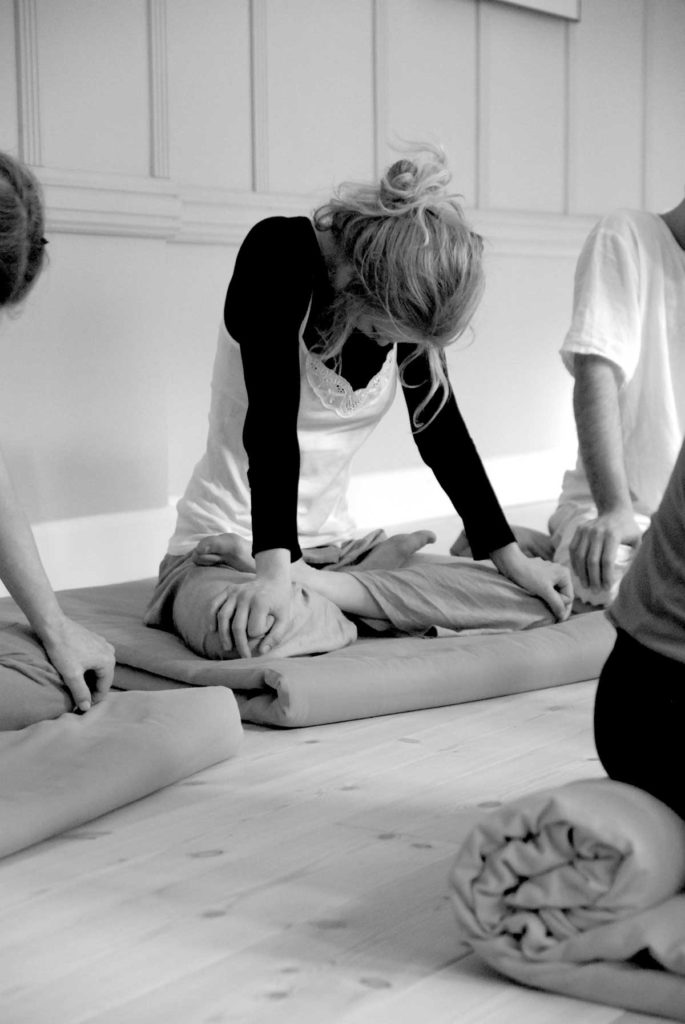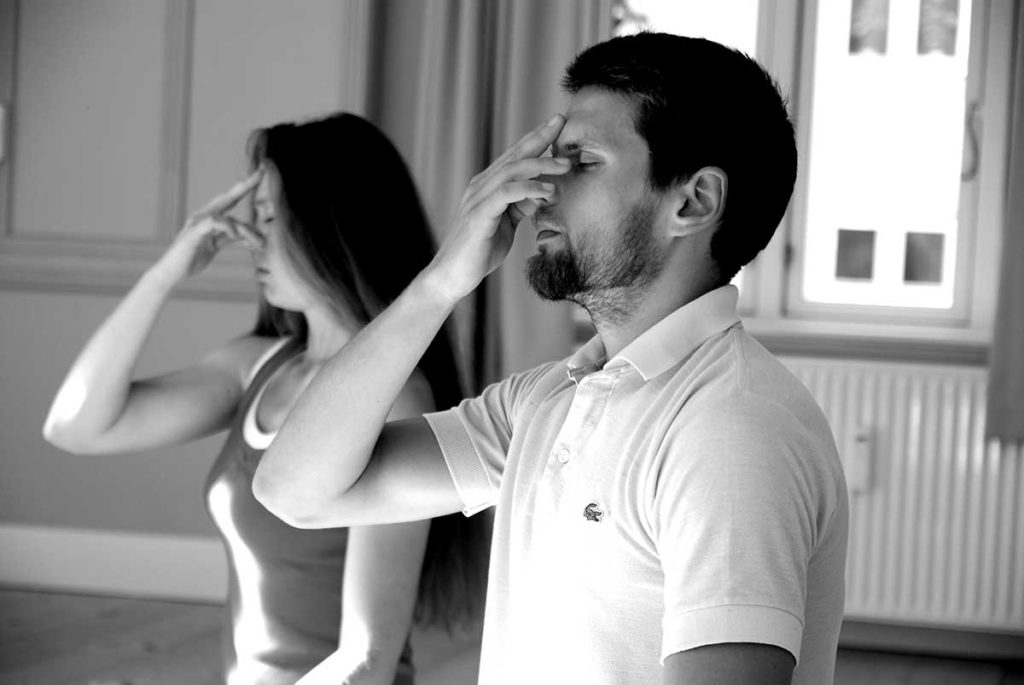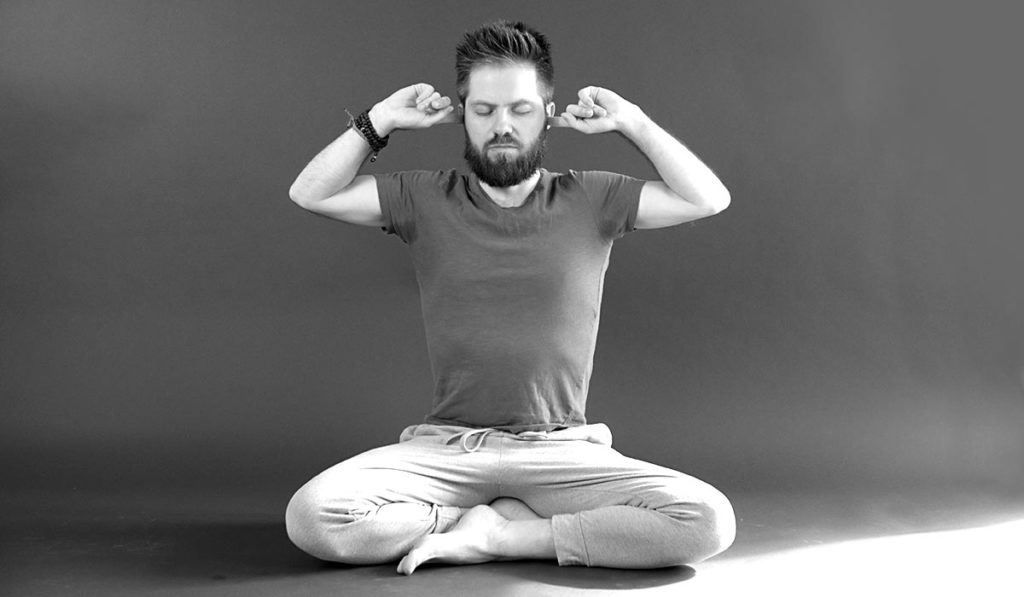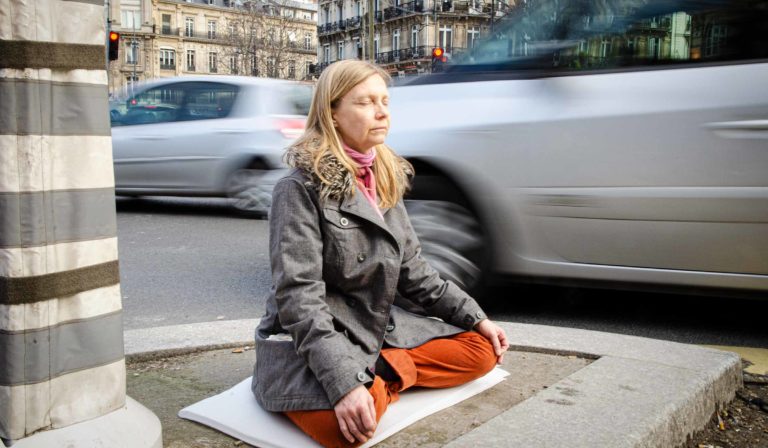At what stage in the unfolding of your yoga practice and under what conditions can you start pranayama? If you research this question, you will find many different indications. But you surely want to know the prerequisites for pranayama practice that truly matters? If you are new to yogic breathing exercises yourself, I know these are challenging waters to navigate. Most yoga teachers have shallow knowledge of pranayama. Whenever there is a lack of knowledge, fear tends to creep in.
I am part of a tradition that gives particular importance to pranayama. I have practised and instructed yogic breathing exercises for twenty years. In this post, I will let you know what I think is essential for taking up a practice and what I believe isn’t.
The ethics of the Yoga Sutras
There is a famous yoga scripture written by sage Patanjali. It is called the Yoga Sutras, and you have probably heard of it. You might even have gotten this text slammed in your head when trying to inform yourself about the prerequisites for pranayama. The Yoga Sutras outline eight limbs of different yoga practices and place pranayama as the fourth one. The first two consists of ethical rules and the third is asana or posture.
Some yoga teachers argue that you have to live according to the ethical rules of Patanjali, and master yoga postures before starting pranayama. I think that is nonsense.
One reason for that is that the Yoga Sutras doesn’t even deal with the breathing exercises from hatha yoga. It is not even clear exactly what pranayama is to Patanjali. But it is not the yogic breathwork we know today. Even if the Yoga Sutras had the same type of practice in mind, requiring ethical living as a precondition is still not justified. It is dogma.
You can practice pranayama with good conscious and excellent results, even if your ethics are flawed. That is the case for most of us anyway. The fact that you are doing yoga is a sign that you are willing to bring your less flattering sides into the light of your awareness.
Asana as a fundament for breathing exercises
But what about asanas, is it not true that asana is crucial for pranayama? While it is true that yoga poses have a vital role to play, we should not be categorical.
Some teachers stress asana mastery as a crucial prerequisite for pranayama as if the right to pranayama was something to earn through asana perfection. That is missing the point altogether.
You do want to practice yoga poses before you get to pranayama because poses remove restlessness and agitation. Furthermore, they loosen up your joints, making it easier to sit in a meditation pose. Through meditative asana practice, you also learn stillness, and your energy starts circulating more fluently. Asana not only makes it easier to train your breath. It also makes your body better at receiving and integrating the effects of pranayama.
But your yoga poses don’t need to look good or be perfect. What you want are the benefits they offer.
Not all yoga poses are equally good preparation for pranayama
Today, asana is such a broad phenomenon that not everything that carries this label is a good fit for pranayama. You should opt for a calm and conscious practice to get deep-reaching effects. Fast, dynamic and sporty yoga does not have the same calming effects.
The way we practice asana in my tradition (that is the tradition of Swami Satyananda) and the way I teach it online here on Forceful Tranquility gives you the perfect preparation for exploring your breath.
A correct sitting pose is a prerequisite for pranayama
There is something you should know about asana. In early hatha yoga texts, you only find meditation poses. When the authors of these texts refer to asana, they are describing how to sit.
To benefit fully from pranayama, you need to be able to sit still comfortably for the whole duration of your practice. If you can’t be motionless for at least 15 minutes, you will find your practice frustrating. So that is a very real prerequisite.
As a beginner, your first choice for a sitting pose is Sukhasana. I have described Sukhasana in this post here. If you can comfortably sit in Ardha Padmasana, Padmasana, or Siddhasana, these poses are even better.
All the poses above are suitable for practices that involve nudging your energy since the pyramid form your body takes when seated, facilitates a fluid distribution of prana. These poses are also excellent for the yogic locks, the chin-lock, the root-lock and the abdominal-lock. These locks are standard components of pranayama.
Suppose the easiest of the poses, Sukhasana, should be impossible for you. In that case, you can still benefit from easy breathing exercises if you sit in a modified meditation pose.



When can beginners start pranayama?
In my tradition, we include pranayama from the very first yoga class. If you get introduced correctly, you can benefit enormously from it already as a neophyte.
This approach works so well for us because we let all the different components of yoga work together. We include cleansing processes, asana, pranayama, mudra, bandha and various meditations in our teaching. All these practices are complementary, and they are at their best when done in combination. They work in such a way that they reinforce each other and create synergies.
The integral approach to yoga is the most harmonious
To successfully practice pranayama you need, in my opinion, not only yoga poses but also meditation. But you don’t need to master either of them to get started. A competent teacher can design balanced yoga sessions. A harmonious session will prepare you for pranayama with yoga asanas and make sure that you integrate the effects thanks to meditation and deep relaxation.
I consider this integral approach the most advantageous way for beginners to get initiated into breathing techniques that work with prana. And that is the way I guide my online sessions here on this website.
The importance of a guide
It is essential to follow a guide or a method when you start pranayama. There are many pitfalls, but you can easily avoid them with the right guidance. So practice with a competent teacher or follow a method online or from a book.
What are the prerequisites for pranayama as an independent practice?
Practising yogic breathing exercises as a component in integral yoga sessions is one way to approach the subject. Another way is to practice pranayama as a standalone practice.
Suppose you want to do breathing exercises as an isolated practice. In that case, you should still have a routine of yoga poses and meditation in place, even if you don’t practice them all at the same time.
I recommend you first to have a solid practice of classical yoga poses in place. I also advise you to familiarise yourself with meditation before starting as well. Once you are comfortable with these disciplines, you will be ready to start pranayama.
I have already advised you to opt for quite and conscious asana practice. But what about your meditation practice? The meditations that best match pranayama are those that train your capacity to experience any sensation, thought or emotion with acceptance and equanimity. Through Antar Mauna meditation, Vipassana meditation, modern Mindfulness, or even just breath awareness, you develop this ability.
You need calm time after working with your breath
Another essential requirement for a sound pranayama practice is to have time to enjoy the calm state it brings about and let it stabilize afterwards. If you include your pranayama as a component in a complete session, this will be naturally solved.
But if there is no other practice after, then you need to stay motionless, with eyes closed, for at the very least 5 minutes afterwards. You would be even better off if you prolong this time to 10 minutes. Without this calm time, the effects won’t have the chance to integrate correctly.
You can practice pranayama on different levels
When you start with pranayama, you should begin with practices that are suitable for beginners. You should practice them at an intensity level that feels good and beneficial to you. From there, advance slowly over months and years. Here again, we come back to the importance of proper guidance. With a well-designed programme, the progressions will be natural.
Both asana and pranayama have a tangible impact on your psyche and your energy. You have to get used to the effects and get comfortable with them before increasing your practice intensity. Always seek a harmonious impact rather than a strong impact.
Regularity is another prerequisite for pranayama
Regularity is necessary – especially if you are ambitious with your practice. But even with regular exercise, it takes time to become comfortable with pranayama, so you need to arm yourself with patience.
But how frequently do you need to practice?
Suppose you opt for the integral approach to pranayama, combining different yoga methods in long sessions the way that I teach it. In that case, you could practice as little as once a week and still make progress. If you are doing pranayama as an independent practice, you should be more regular. Then the best would be to practice once a day.
Suppose you want to profoundly explore breathing exercise and work longterm to make your breath slow and your retentions long. In that case, daily practice is essential. Besides, you should practice at the same time each day.
If you can’t be regular, then it is better not to focus on pranayama.
Special diet and celibacy are not prerequisites for pranayama
Diet indeed influences pranayama. But don’t let your current diet stop you from starting. It is not dangerous to practice if your diet is not ideal; it is just more difficult. What does matter much more is that you have digested before practising. You need four hours of digestion after your last meal for optimum practice.
Celibacy is another supposed prerequisite I have come across. Some yogis even claim that you could go crazy if you don’t respect sexual abstinence. Though sexual abstinence could be of some benefit during a period of high-intensity practice, scare-stories about insanity are not real. Such ideas are rooted in morality rather than in any real issues.
Air quality is not an essential factor
Is good air a prerequisite for pranayama? A well known French yoga teacher that I know told me she didn’t practice pranayama in the city because of air pollution. I think that is another silly reason not to do pranayama.
If you live in a city with bad air, you breathe that air all the time anyways. You will not absorb more pollution because of practising pranayama. If anything, your body will become better at handling pollution.
But of course, fresh and pure air is always better, so do what you can to make the best out of the room in which you will practice.
Purification of the nadis as a prerequisite for pranayama
Some medieval yoga scriptures hold that purification of the nadis, the energy vessels, is essential before starting pranayama. However, what they mean precisely is not entirely clear. For example, one of the most important pranayama exercises is called “Nadi Shodhana” which refers to a practice that is meant to purify the nadis.
I see pranayama as an essential contribution to purifying your energy system rather than a prerequisite to practice.
Recapitulation of the conditions that really matters for pranayama
To sum up, for excellent pranayama practise make sure to do the following :
Support your pranayama with yoga poses.
Train to sit still in a correct pose.
Learn meditation.
Get proper guidance.
Practise regularity.
Practice pranayama only once you have digested your last meal.
Make sure to get calm time for at least 5 minutes after pranayama.
Any other indications are secondary or unimportant.




